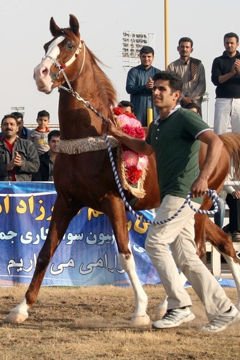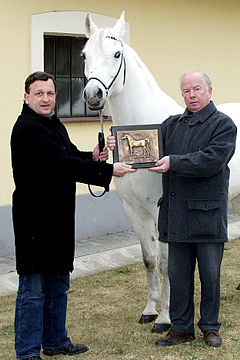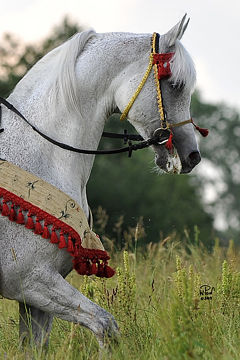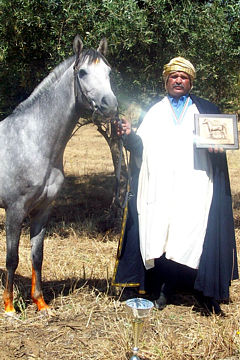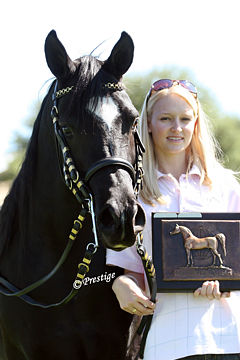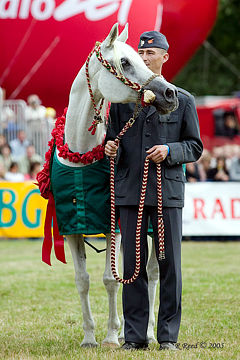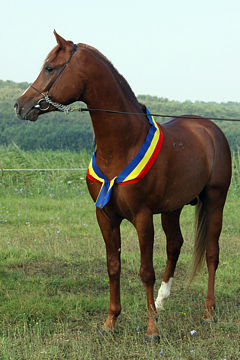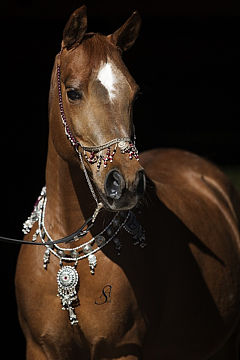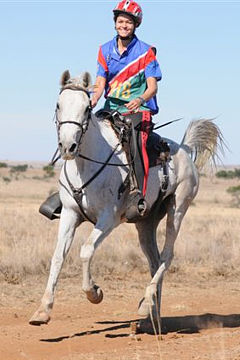The WAHO Arabian Horse Definition reads as follows:
For the past 50 years WAHO has entertained a continuing flow of questions and requests concerning the registration of purebred Arabian horses. Countries without registries were given help in establishing new registries and countries with existing registries, not acceptable to most other registering countries, were given help in making their stud books acceptable to other WAHO Members.
Soon after WAHO was established the Executive Committee began setting up the mechanism to help determine the validity of horses proposed as initial entries in new stud books, as well as the purity of horses registered in stud books not yet totally acceptable to all WAHO Members.
Inspection & Investigation Committee teams, representing WAHO, were established and sent to various nations in an effort to clarify, for the recording authorities, the requirements needed for a horse to be declared a “Purebred Arabian Horse.” WAHO was able to aid several aspiring registries, but it soon became evident that the registering authorities of the world could no longer work with the old terminologies used to establish purity. They were truly non-defining and every existing book appeared to have horses that did not fit the accepted phraseology that has historically been used to establish Arabian horse purity. An example of these somewhat misleading terms might be “a horse coming from the primary source” or “a horse whose pedigree traces to the Middle East.”
It was obvious to the Executive Committee that there were many horses whose origin could be traced to the Middle East that were not purebred Arabians. “Primary Source” is a term that also has no real meaning.
Following a three-year study period, it was determined that over 95% of the known purebred Arabian horses were registered in stud books acceptable to WAHO. With this fact in mind WAHO decided to present to the registries of the world a definition of the Arabian horse, understandable and workable, for their consideration.
A nucleus of registries, that had historically been acceptable to each other due to longevity and proven performance, was used to form a beginning for our definition. To this list were added several other existing stud books that had subjected themselves to the scrutiny of the WAHO Inspection & Investigating Committee and had complied with the recommendations set forth by the Executive Committee of WAHO.
In addition to the definition the Executive Committee agreed that any new or unknown source of purebred Arabian horses would have to make itself known to the world community at an early date or forfeit future acceptance.
Following the study period and after much deliberation the Definition was agreed upon by the Executive Committee. It was presented with applicable conditions and unanimously accepted by the delegates at the WAHO conference held in Malmö, Sweden, in 1974, where the official WAHO Arabian Horse Definition was unanimously accepted by the delegates. It is further updated and reconfirmed at each biennial Conference as required.
At the 1998 WAHO Conference in Bahrain the Delegates voted unanimously to reconfirm the WAHO Definition and make its application mandatory.
The WAHO Arabian Horse Definition reads as follows: “A pure-bred Arabian horse is one which appears in any pure-bred Arabian Stud Book or Register listed by WAHO as acceptable.”
It is a mandatory rule that a horse entered in a Stud Book or Register for purebred Arabian horses fully accepted by WAHO must be acceptable as purebred to the Registration Authorities of all WAHO Members and must not be rejected on a pedigree basis.
At the 2004 WAHO Conference in Warsaw, Poland, the Delegates passed a majority vote to close the world Arabian Stud Books to all new horses which do not trace to previously accepted horses under the WAHO Definition.
At the 2012 WAHO Conference, the WAHO Definition Compliance paragraph was revised and updated by vote of the delegates.
The WAHO Definition and Compliance paragraph now read in full as follows:
A PUREBRED ARABIAN HORSE IS ONE WHICH APPEARS IN ANY PUREBRED ARABIAN HORSE STUD BOOK OR REGISTER LISTED BY WAHO AS ACCEPTABLE.
COMPLIANCE WITH WAHO DEFINITION
It is a mandatory WAHO rule that a horse entered in a stud book or register for purebred Arabian horses fully accepted by WAHO must be acceptable as purebred to the Registration Authorities of all WAHO Members and must not be rejected on a pedigree basis nor on the basis of genetic disorder test results nor on the basis of phenotype.
Other Stud Books may be added to the WAHO Definition as they meet the WAHO criteria and will be dated from January 1st of the year approved. Approved nations applying the principles of the Definition in their registering policies will be automatically updated. There are occasions when a Stud Book has its Membership suspended. To be kept current, Members should contact the WAHO Executive Secretary.
Registries on the accepted list that register horses from a source other than those listed in the official WAHO Definition may put their stud book in jeopardy of being eliminated from the accepted list and Definition.
As of 1 January 2023 the following Stud Books are considered acceptable:
| Algeria Argentina Australia (includes Brunei, India, Indonesia, Malaysia, The Philippines, Singapore, South Korea, Taiwan, Thailand and Vietnam) Austria Azerbaijan Bahrain Belgium (includes Bosnia & Herzegovina, Montenegro & North Macedonia) Belize (retired from WAHO Membership 01.01.2020) Bolivia Brazil Bulgaria Canada Chile (includes Peru) Colombia Croatia Czech Republic Denmark Ecuador Egypt Estonia Finland France Germany (includes Luxembourg & Albania) Hungary Iran Iraq Israel Italy Japan Jordan Kazakhstan Kuwait |
Lebanon Libya Lithuania Morocco Namibia Netherlands (includes Malta) New Zealand Norway Oman (includes Tanzania) Pakistan Poland Portugal Qatar Romania Russia Saudi Arabia Serbia Slovakia Slovenia South Africa Spain Sweden Switzerland Syria Tunisia Turkey United Arab Emirates United Kingdom U.S.A. (includes Panama; Mexico) Uruguay Venezuela Zimbabwe (includes Lesotho) |
Applying Member Countries: Cuba; Yemen; China; Ukraine
Additional conditions also passed in the original and subsequent motions:
- As from 31/10/2004 no new applicant will be accepted as a Member unless either a) all those horses submitted for inclusion in its stud book are already registered in Stud Books listed under the WAHO Definition or b) all those horses submitted for inclusion in its stud book are shown after due investigation (see 2 below) to trace to previously accepted horses within the pedigrees of horses registered in Stud Books listed under the WAHO Definition.
- The following procedure to assist Registries in determining purity in accordance with the above Definition is used: Whenever a horse is submitted to a Registry for registration as a Purebred Arabian, and when it does not trace immediately to a WAHO-accepted Stud Book, the Registry should submit the registration application to WAHO together with all available information. WAHO would then undertake to look into the authenticity of the applicant and the bona fides of the horse concerned and make a ruling to the applying Stud Book.
- A newly accepted Member should be granted a period of five years during which it would be represented by only one Voting Delegate at General Meetings and in which it could open its Stud Book and present the horses in it to WAHO for investigation. Any such new Member, having satisfied WAHO in all the tests to which it had submitted that Member, and having been accepted by a resolution passed by a 2/3 majority of the General Meeting, would be considered on a par with all other Members and be represented at General Meetings by two Voting Delegates.


